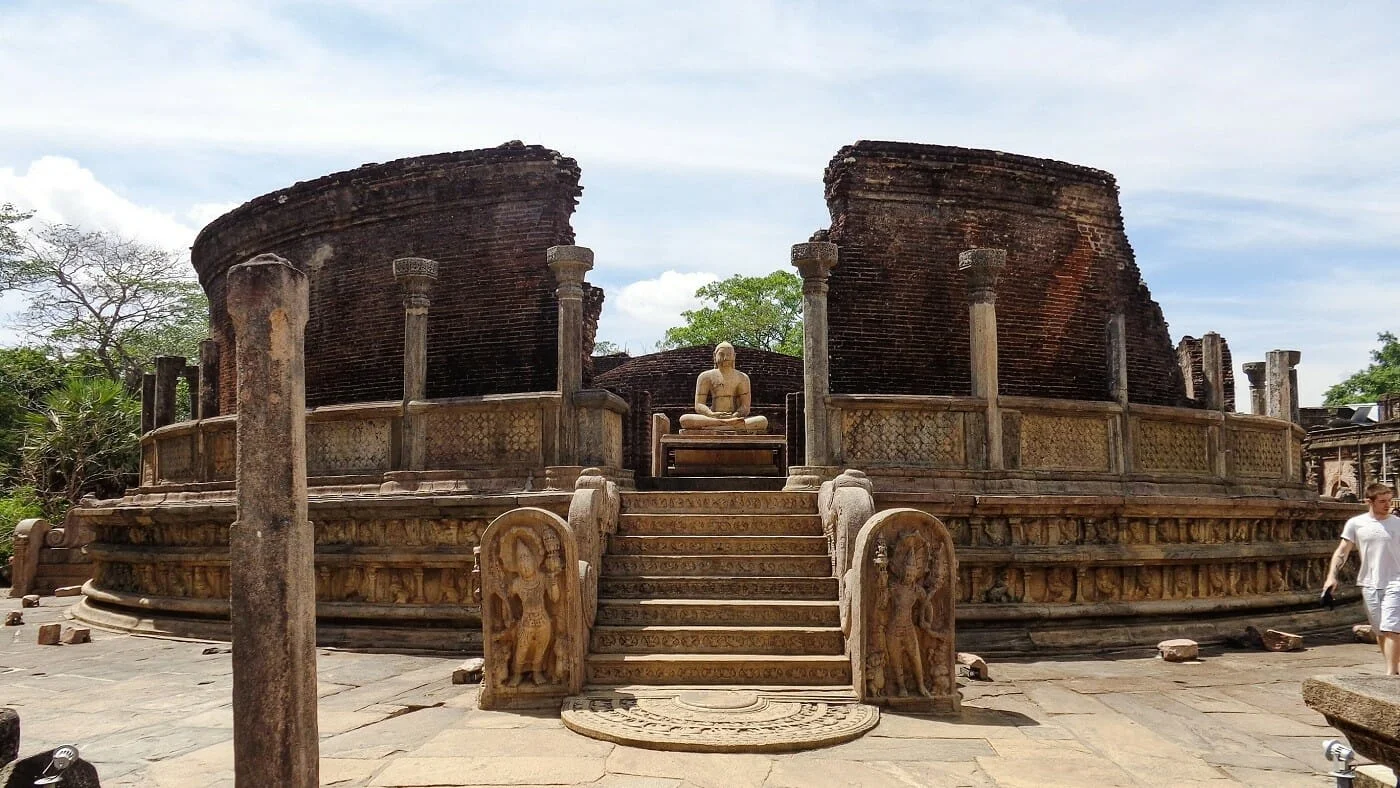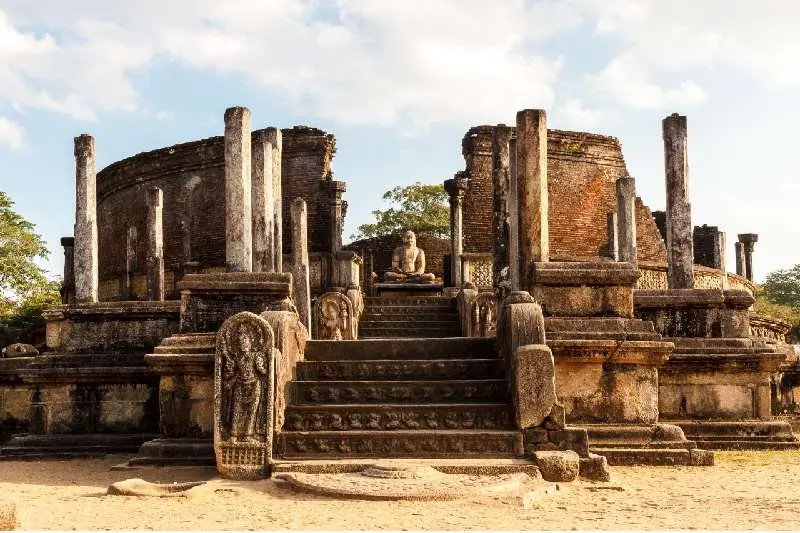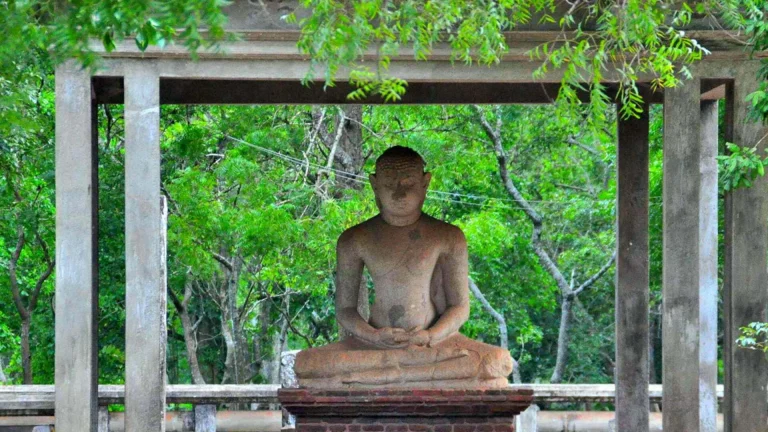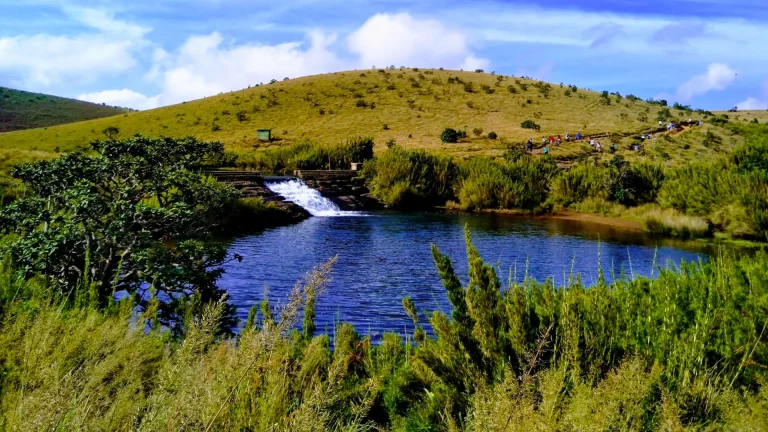All Provinces
Exploring the Ancient Marvel: Polonnaruwa Vatadage, Sri Lanka
Nestled in the heart of Sri Lanka’s North Central Province, the ancient city of Polonnaruwa stands as a testament to the island’s rich history and cultural heritage. Among the numerous ruins and relics that dot this UNESCO World Heritage Site, one monument stands out for its architectural brilliance and spiritual significance – the Polonnaruwa Vatadage. This ancient structure, with its intricately carved stone pillars and circular design, offers a glimpse into Sri Lanka’s glorious past and the enduring influence of Buddhism on the island.
A Glimpse into History
The Polonnaruwa Vatadage was built during the reign of King Parakramabahu I (1153–1186 AD) or his successor, King Nissanka Malla (1187–1196 AD), to enshrine a sacred relic, likely the Tooth Relic of the Buddha or a Buddha statue. It served as a protective stupa (dagoba) housing these holy relics, showcasing the architectural genius of the Polonnaruwa period, which succeeded the Anuradhapura Kingdom after its decline.
The Vatadage is believed to have been the ceremonial heart of the ancient city, where monks, royalty, and commoners alike would gather to venerate sacred relics. The circular design, distinct to the Vatadage, was a symbol of the cyclical nature of life and the cosmos, embodying key Buddhist teachings.

Architectural Splendor
The Vatadage’s circular form is a striking departure from the more linear structures typical of ancient Sri Lankan architecture. The structure is composed of two concentric stone platforms, each adorned with a series of finely carved stone pillars and statues. The platforms are accessed through four intricately designed entrances, each oriented toward the cardinal points of the compass, symbolizing the omnipresence of the Buddha.
At the center of the upper platform sits the main feature of the Vatadage: a stupa (or dagoba) which once enshrined a sacred relic. Surrounding the stupa are four seated Buddha statues, each facing one of the cardinal directions, representing the Buddha’s teachings reaching all corners of the world.
The circular base of the Vatadage is surrounded by a set of beautifully carved guardstones (Mura Gal) and moonstones (Sandakadapahana), which are unique features of ancient Sri Lankan architecture. The moonstone at the entrance of the Vatadage is considered one of the finest examples of this art form, depicting the cycle of samsara (the cycle of birth, death, and rebirth), with animals symbolizing various stages of life.
Spiritual and Symbolic Significance
More than just a beautiful structure, the Polonnaruwa Vatadage holds deep spiritual significance. The circular design is believed to represent the cyclical nature of existence in Buddhist philosophy. Each element of the Vatadage is symbolic, from the four entrances and Buddha statues to the stupa itself. The four statues, in particular, signify the spread of the Buddha’s teachings in all directions and invite worshippers to contemplate the universality of the Dhamma.
For devotees, visiting the Vatadage was an act of profound religious reverence. The sacred relic enshrined within the stupa was a focal point of pilgrimage and devotion, drawing monks and laypeople alike. Even today, many visitors experience a sense of calm and spirituality when walking through the ruins.
How to Get There
Polonnaruwa is located approximately 215 kilometers northeast of Colombo, and the easiest way to get there is by road. Visitors can either take a bus or hire a private vehicle from Colombo, Kandy, or Sigiriya, another nearby UNESCO World Heritage Site. The ancient city is well connected by the main highways, and the journey takes about 4-5 hours depending on your starting point.
Once you arrive in Polonnaruwa, the Vatadage is located within the Sacred Quadrangle (Dalada Maluwa), which houses many other significant ruins. Visitors are required to purchase a ticket for entry into the archaeological site, which grants access to the Vatadage and other nearby monuments.
Best Time to Visit
The best time to visit Polonnaruwa Vatadage is during the cooler months of December to March when the weather is pleasant for exploring the outdoor ruins. Try to arrive early in the morning or late in the afternoon to avoid the midday heat. The early hours offer a more peaceful experience, allowing you to appreciate the serenity and spiritual ambiance of the site.







What to Expect During Your Visit
As you step into the Vatadage, you’ll be greeted by the impressive stonework and the remnants of the ancient architecture. The lower and upper terraces offer distinct perspectives of the monument, with each layer revealing more of its intricate design. Don’t forget to take a closer look at the beautifully carved moonstone at the main entrance – a masterpiece of ancient Sri Lankan art.
As the Vatadage is part of a larger archaeological park, you’ll also have the opportunity to explore other fascinating ruins nearby, including the Gal Vihara, Lankathilaka, and the Royal Palace complex. Each of these sites holds its own historical and architectural importance, offering a deeper understanding of the rich legacy of Polonnaruwa.
Travel Tips
- Respect the Sacredness: Polonnaruwa Vatadage is a sacred site, so it’s important to dress modestly and behave respectfully. Avoid climbing on the Buddha statues or any of the ancient structures.
- Bring Water and Sunscreen: Sri Lanka can be hot and humid, especially around midday, so it’s important to stay hydrated and protect yourself from the sun.
- Hire a Guide: To truly appreciate the history and significance of the Vatadage and surrounding ruins, consider hiring a knowledgeable guide who can provide detailed information and context.
- Footwear: Be prepared to remove your shoes when entering the sacred areas around the Vatadage, as is customary at Buddhist sites in Sri Lanka.
Final Thoughts
The Polonnaruwa Vatadage is not just a relic of a bygone era but a living monument that continues to inspire awe and reverence. It is a testament to the artistic and spiritual achievements of ancient Sri Lanka and offers a window into the profound influence of Buddhism on the island’s culture. Whether you’re a history buff, an architecture enthusiast, or simply someone seeking a peaceful retreat, a visit to the Polonnaruwa Vatadage will leave you with lasting memories of this remarkable ancient site.
So, when planning your next trip to Sri Lanka, make sure to carve out some time to explore the ancient wonders of Polonnaruwa – and let the Vatadage be the crown jewel of your journey.
See More Tourist Places Click Here





















